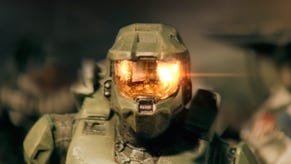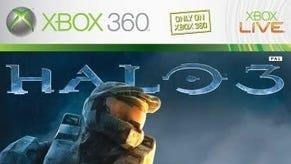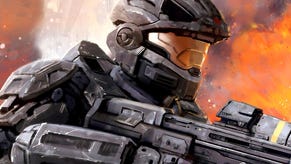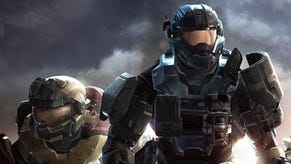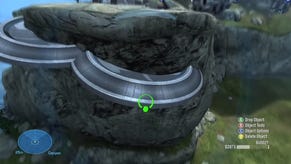Tech Interview: Halo: Reach
An exclusive, in-depth chat with Bungie on the making of Reach.
Yes, all the ViDocs were created from unoptimised and unfinished builds of the game, so it's not surprising that troublesome spots exist. We run dozens of performance reviews on each level, testing it under different configurations of multiplayer, split-screen, different game types, etc. And then we hammer on the bad areas until they meet our performance bar. Having the ability to record the entire play session and play it back in the theatre is an incredible help in figuring out what is causing perf. spikes.
As for v-sync, our frame synchronisation is pretty complex, and there are many more issues than just total GPU throughput. We're not just trying to optimise frame rate and minimise tearing, but we're also simultaneously trying to minimise controller latency and reduce framerate jitter. Because of this, we usually run in a mode that lets the screen tear in the top 10 per cent of the frame, and we do some weird things, when it gets really hot, to optimise latency instead of trying to keep the GPU red-lined.
Absolutely, it would simplify my job immensely if we could drop split-screen, not to mention give me more time to work on cool new things. But it's such an integral part of the Halo experience that there's no way we'd ever drop it! With split-screen, every piece of functionality in the render engine has to be able to handle different resolutions, which can get especially hairy when you're optimising things down to the render target tile size.
We also have to balance performance in the different split-screen modes. There's a certain amount of overhead for each view - things like visibility calculations and set-up costs - that have to be paid four times over in four-way split-screen. Not to mention that your default vertex count is quadrupled as well. So to solve this, each split-screen configuration has its own performance settings, pulling in LOD distances and turning down features, to pay for the increased overhead.
And on top of that, each split-screen configuration also has to be tested (on every level, in every language), debugged, performance reviewed, etc. So, suffice it to say, split-screen is a limiting factor, and if you're interested in the best-looking experience, play single screen.
The interesting thing about how we set up missions for Halo is that the co-op support ends up being fairly cheap from a Mission Design standpoint. Although I am sure the network and performance engineers would not say the same thing!
We end up doing some work to make some encounters react to co-op differently than in single player. Things like changes to squads or how the enemies set up or are reinforced. But none of that needs to happen to make it work, it is simply there to make it more interesting if you play the game in single-player and then go back into co-op. We do have a few gating elements (doors that load and unload the level geometry when you open them, elevators, and such) in the game that ended up needing a little extra muscle at the end to solve all of the bugs associated with co-op. But nothing major.
From an AI balancing standpoint, the AI engineers added several balancing tools that we could use in co-op to make it more challenging for the player. Things like projectile speed, damage per shot, Evade and Armor Lock chance, rate of fire and burst length were all given multiplier knobs based on co-op players. So we made them better when two players were playing and then even better when four were playing.
No plans that I know of to have deleted scenes be part of DLC, but the community team would be better able to answer that. However, I can tell the story of the deleted Scarab level.
When we were planning out all of the missions, we knew we were going to have something in a ravaged city. We were not sure if it was going to be just before it was glassed, during, or just after. Initially we wanted to do it after, and we were going to use a Scarab as the means for the player to cross the glassed terrain. So the player was going to work to hijack a Scarab and then be able to control the Scarab across parts of the edges of the glassed city.
We had a working prototype of a player-controlled Scarab and a mock-up of a section of the city. There were definite moments when you knew the context of what you were doing was going to be awesome, and some of the physics of shooting a super cannon to blow up Covenant was going to be sweet, but the act of controlling a Scarab was not something I had faith was going to be a sustainable experience for any length of time. And the cost of making the Scarab driving real was very high, so we decided to cut that mission.
And then we added a mission to take the place of the deleted mission, which ended up being New Alexandria. We still knew we needed to show a city in the process of being destroyed by the Covenant, and flying the Falcon was awesome. Chocolate and peanut butter!
Every time we talk about cut content, players lament the loss, assuming the discarded scenarios and features would have made remarkable and impactful additions to the game. The reality is that these grand ideas aren't incorporated because they would be remarkable and impactful for all the wrong reasons. That's why they're ultimately cut, and that's why players won't see us resurrect "deleted scenes" as DLC.




